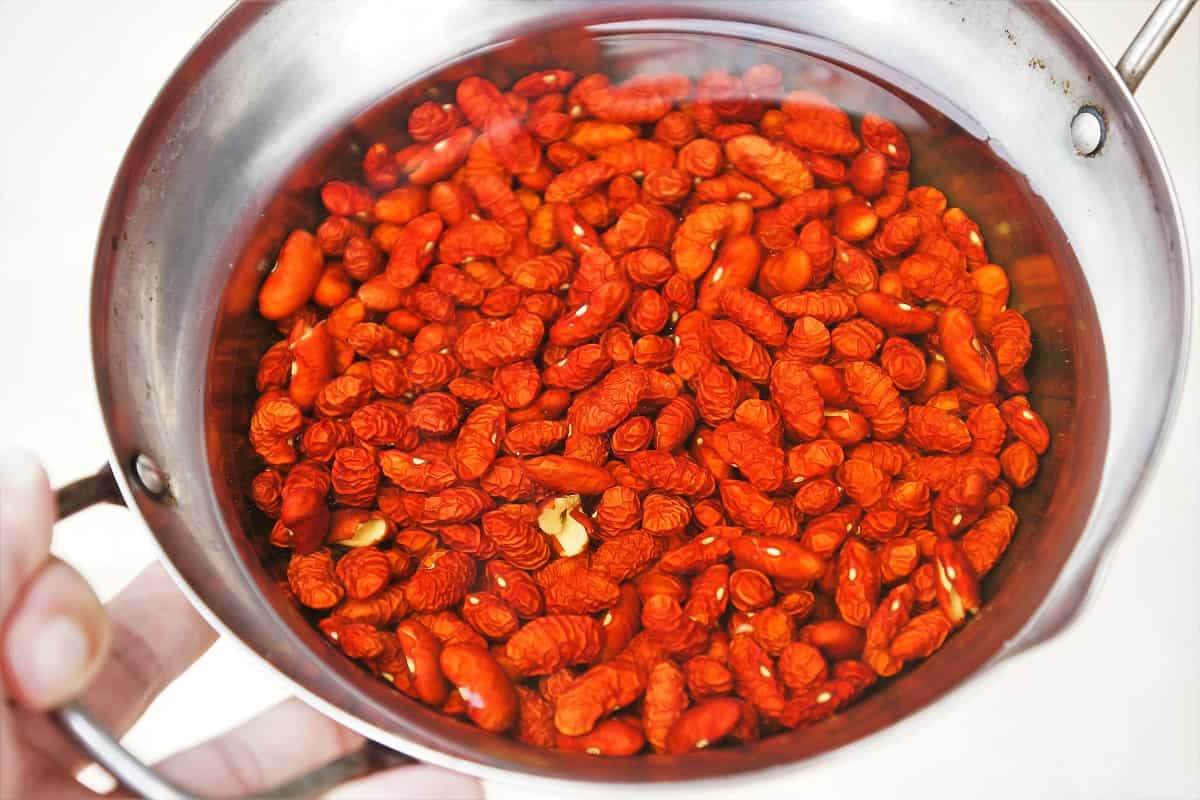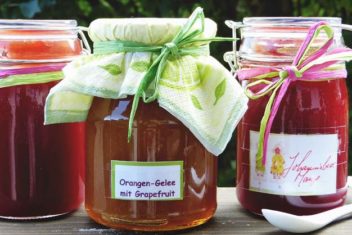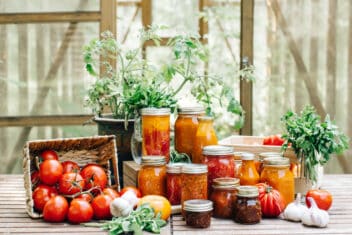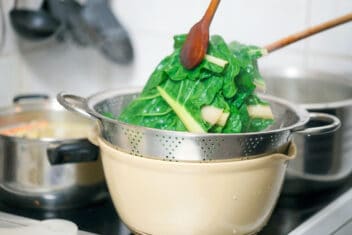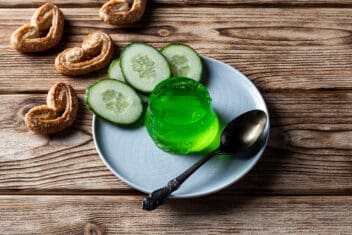Mmmm….beans.
Is there anything more delicious (and versatile) than a dish of hot beans?
Dry beans are pantry staples that just about every cook and homesteader will keep in ready supply. They can be used in all kinds of recipes and when stored properly can last for many years.
However, when it comes to cooking them up, there’s one extra step you will need to take to ensure that they are safe to eat. You need to soak them first.
Soaking dry beans is an essential part of working with this staple. If you don’t take the time to soak dried beans, there can be several undesired consequences.
Here’s what you need to know.
What is the Purpose of Soaking Dried Beans?
Soaking is an essential step in preparing beans. Whether you’re eating kidney beans or black beans, fava beans, or Great Northerns, soaking beans is essential.
There are, however, legumes that don’t need to be soaked – examples include split peas and lentils.
Soaking your beans helps them cook faster and more evenly while also improving their digestibility. Adding salt can make the process even faster, as the salt helps dissolve the skins.
You don’t technically have to soak dry beans before cooking, but it will improve their flavor and digestibility while also reducing the amount of time it takes them to cook. It will also reduce splitting, which can cause your beans to lose their shape and become mushy.
Will You Get Sick if You Don’t Soak Beans?
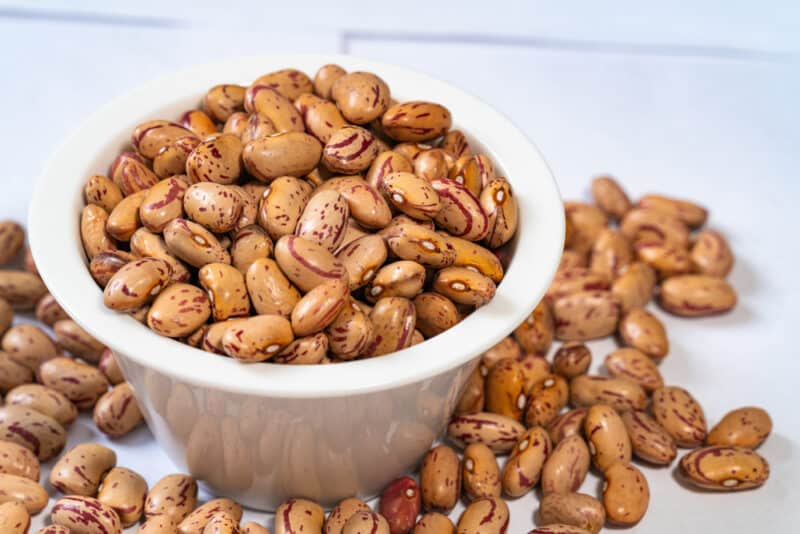
Beans that aren’t soaked ahead of time will take longer to cook but they will ultimately cook. However, you might be wondering if eating unsoaked beans will make you sick.
You won’t get sick from eating unsoaked beans but you can get sick from eating raw or even undercooked beans. That’s because raw beans contain compounds known as lectins. These are glycoproteins found in all kinds of plant foods. Although some glycoproteins are not harmful, others can be toxic, including the ones found in raw beans.
Beans have a better nutritional profile after they are cooked and can be dangerous if consumed raw. The evolutionary theory behind lectins is that they are believed to discourage animals and other pests from eating raw beans and seeds (a plant’s method of reproduction, after all).
Animals can, in many cases, smell the toxic lectins. However, humans don’t have such a developed olfactory sense.
Some types of beans are more harmful when consumed raw than others, especially kidney beans. Eating uncooked beans can cause serious digestive distress. Always be safe rather than sorry and thoroughly cook your beans, even if you decide not to soak them!
How to Soak Dry Beans

There are two main ways to soak dry beans. Here’s a quick breakdown.
1. Overnight Soaking
Overnight soaking is often considered the traditional method of soaking dry beans. It is the least labor-intensive but does require the most amount of time.
To do this, you’ll cover your beans with water so that they are completely submerged with an extra 2-inches or so on top. Add 2 tablespoons of salt per pound of beans, then let them soak for up to 12 hours. At the very least, they need a minimum of 4 hours.
Then, drain the beans and rinse them well before you cook them.
2. Quick Soaking
Quick soaking, as the name suggests, is a much faster method of soaking your dry beans. However, you’ll need to stay by the stove a bit longer than the method above.
To do this, you’ll put your beans in a pot on the stove, add water so that the beans are covered with 2-inches to spare, and add salt (if desired). Bring the water to a boil, then shut off the heat and let the beans soak for an hour.
Drain, rinse, and continue to your favorite recipe.
Alternatives to Soaking Dry Beans
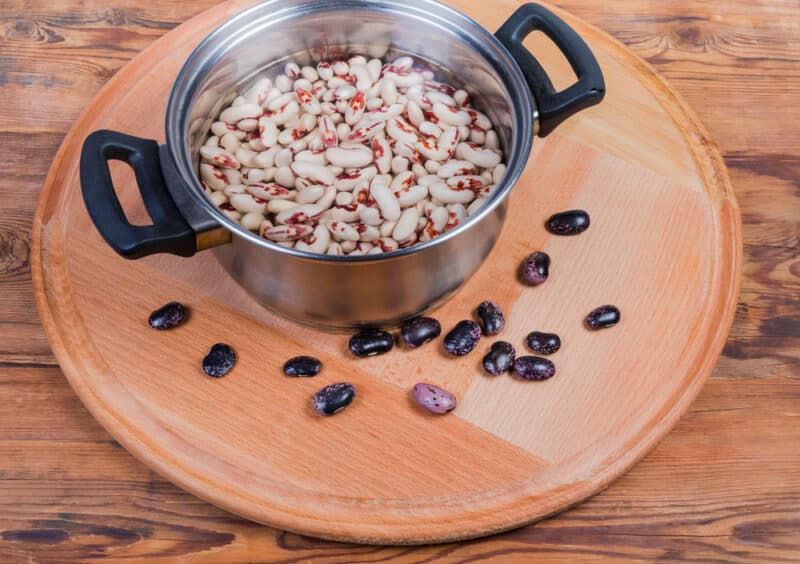
Believe it or not, you don’t have to soak your beans at all – but you will need to make some modifications to your recipe.
If you decide not to soak (or if you’re like me, and have a tendency to forget), all you need to do is add them to your pot and plan on cooking your recipe for around 1-2 hours longer than the typical cooking time.
You’ll need to keep a close eye on the level of the water or stock as you’re cooking. If the pot or beans look dry, add more liquid ASAP so the beans don’t dry out and get crunchy. There always needs to be water covering your beans as they’re cooking.
Another option is to cook your beans in the oven. As long as you are paying constant attention to the beans in the oven, you can keep them at a slow simmer and let them “soak” this way. Again, make sure they are always covered with water. It will take around 1-2 hours to soak and cook beans in this way, allowing you to double up on the processes of soaking and cooking.
Finally, know that the older and drier the beans are, the more soaking they will need. Beans lose moisture the longer they sit.
Is it Safe to Can Dry Beans Without Soaking?
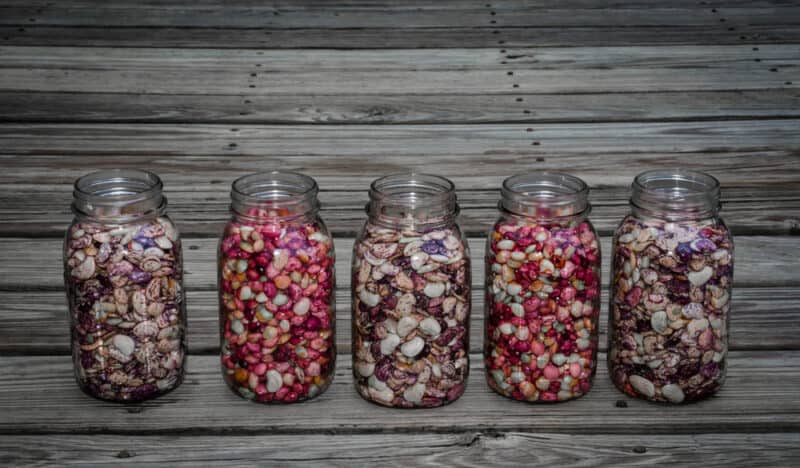
According to the National Center for Home Food Preservation, dry beans should be soaked for 12-18 hours before canning.
As with preparing beans in any other way, pre-soaking the beans will help enhance their digestibility and nutrient profile.
Soaking the beans also ensures that they will be adequately rehydrated and won’t taste tough when you get to eat them later on.
Can You Feed Unsoaked Dry Beans to Livestock?
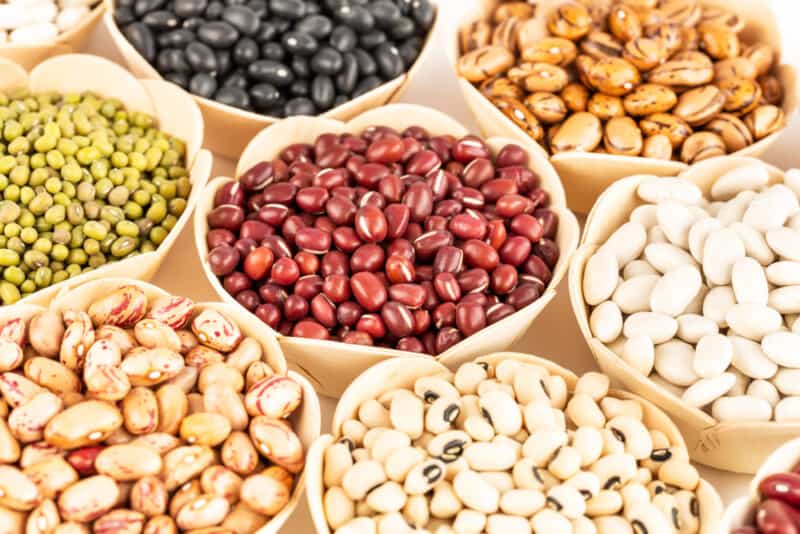
Many people wonder whether extra or old dry beans that you grew or had in stock can be fed to livestock if they are unsoaked.
The reason why this is considered an option is that beans are often used as ingredients in cubed or pellet feeds like protein supplements. Although they aren’t used, they are usually only included at 2% of the dry matter in a pellet formula. Lectins usually aren’t an issue.
However, if you feed a large number of dry beans to livestock, they can cause digestive problems.
If you want to salvage the beans, you can sell them to a feedlot to incorporate in a finishing diet. Of course, you can always soak the beans ahead of time and then feed them out, too. I wouldn’t recommend feeding too many unsoaked dry beans to your livestock. It’s not worth the hassle!
One note here on chickens – while cattle and sometimes even pigs can be fed unsoaked dry beans in small amounts, avoid feeding dry beans in any quantity to chickens. The hemagglutinin in dry beans can be extremely toxic to birds, including backyard chickens.
Soaking Dry Beans: A Good Idea, but Not Your Only Option
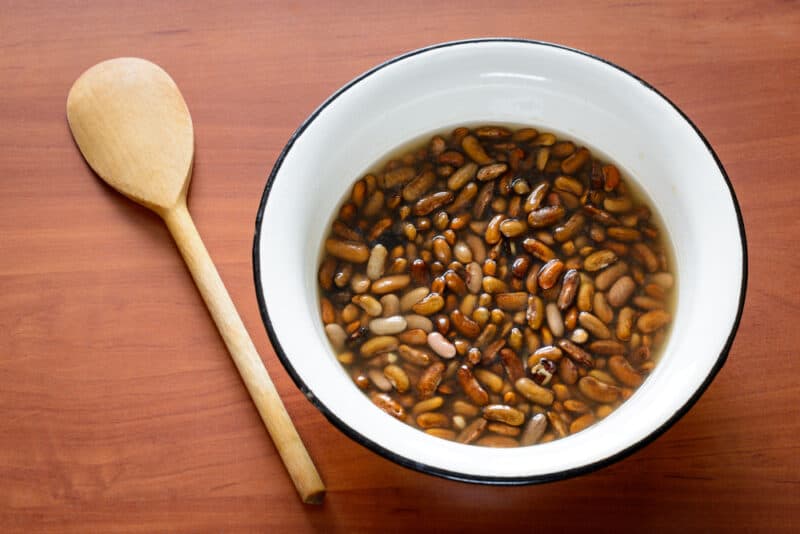
In my opinion, soaking dry beans is a smart choice and when I have the time to do so, it’s always the method I’ll choose. However, despite what you may have been told in the past, it’s not your only option.
If you’re looking for a way to make beans more digestible, try soaking them before cooking. Soaking the dried beans in water will help soften their outer skin and break down any complex sugars that might be present. This makes it easier to cook the beans without risking an upset stomach or digestive problems later on.
Soaking the beans isn’t your only option, but for most people, it’s the easiest. So all that remains is the question of when?
When should you soak your dry beans? The best time is overnight, but if you forget, don’t be afraid to do it during the day. Just don’t wait until right before dinner time!
